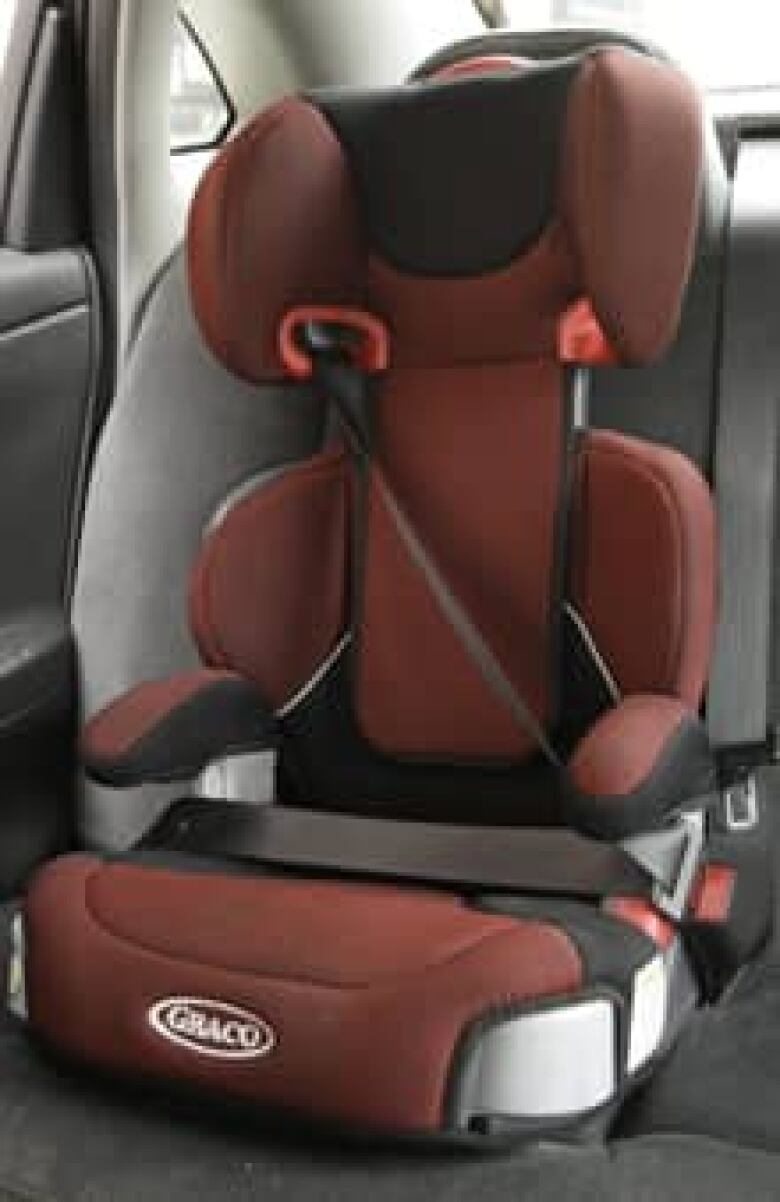Child booster seat laws need work: safety group
Children under four feet nine inches require booster seats: Safe Kids
Mandatory use of child booster seats should beharmonized across the country to prevent serious injuries, a child safety group urges.
Safe Kids Canada said Wednesday that most parents of children under the age of 10 feel a booster seat is needed untilchildren arephysically able to use a seat belt ontheir own, but that belief doesn't alwaystranslate into action.

About 78 per cent of parents surveyed for the group supported the idea of a booster seat law, yet only 30 per cent of Canadian children who should be using booster seats actually do so, according to Transport Canada.
Car collisions are the leading cause of death for Canadian children under the age of 14, Transport Canada says.
"What we hear from parents is that they find they're always constantly arguing with their children about using the booster seat," said Denyse Boxell of Safe Kids Canada. "What we recommend to them is that this is a rule that can't be broken."
If a child has outgrown their forward-facing car seat and is under four feet nine inches tall or 145 centimetres then put them in a booster seat, the group advises.
Three months ago, Salina Lee and her daughter Peri, who was eight, were in a head-on collision northeast of Toronto. Salina suffered a broken arm and her daugher, who has in a booster seat, suffered only a few bruises.
Her mother said the seat saved her life.
"I think she would have had some abdominal trauma for sure," without the seat, Lee said.
About 3,500 children in Canadaare injured in car crashes and another 61 children are killed each year the equivalent of two elementary school classrooms. Source: Safe Kids Canada
A booster seat reduces the risk of injury by 60 per cent, the group said.
The federal government sets standards for booster seats, but it's up to provinces to make laws about using the seats.
Currently Alberta, Manitoba, Saskatchewan, Yukon, Northwest Territories and Nunavut do not have mandatory booster seat legislation for children under four feet nine inchestall.
Safe Kids Canada believes there should be a harmonized approach to booster seat legislation for all such children, regardless of where they live in the country.
Booster seats raise children to a height at which lap and shoulder belts can be worn correctly.
When booster seats aren't used and a collision occurs, "the thing that we worry about most is something called seatbelt syndrome, which is abdominal injury and spinal fracture together," said Dr. Suzanne Beno of Toronto's Hospital for Sick Children.
"The reason is that the shoulder belt cuts across the neck, rides up over the pelvis into the abdomen and children can be very severely injured from that."
Abooster seat is held in place by the seatbelt. It is not tethered to the car like a child car seat.
The release coincides with the kick-off of Safe Kids Week, which runs May 30 to June 5.
Leger Marketing surveyed 1,029 adult Canadianswith children under the age of 10.The national online survey was conducted between Dec. 2and Dec. 9, 2010.












_(720p).jpg)


 OFFICIAL HD MUSIC VIDEO.jpg)
.jpg)



























































































